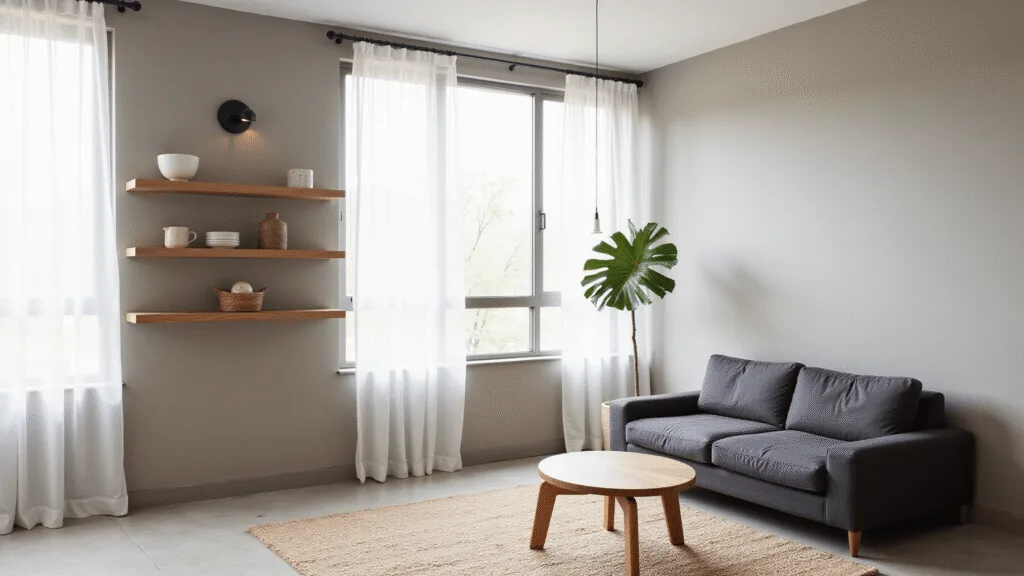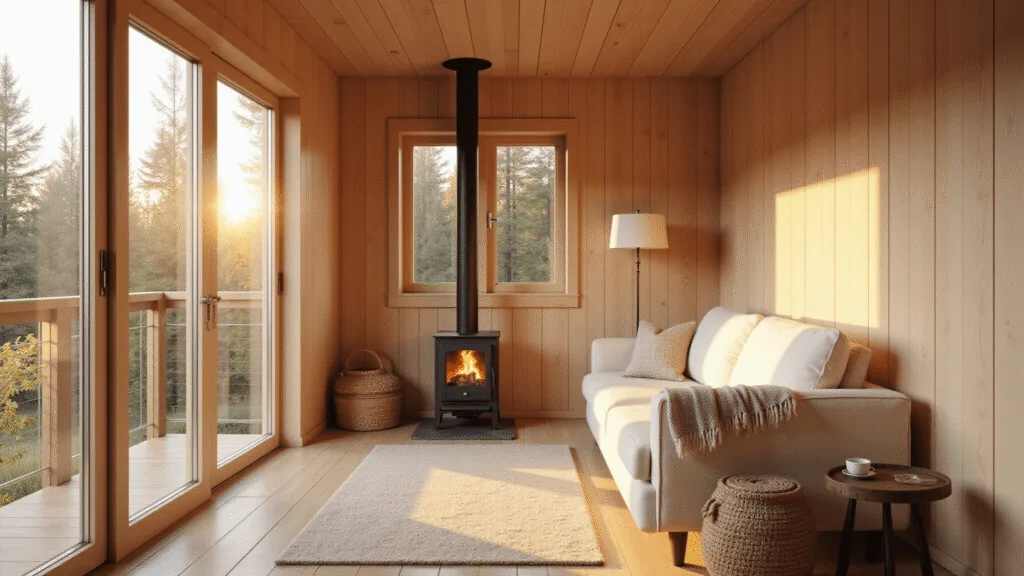Japandi Architecture and Interior Design: Where East Meets North in Perfect Harmony
Japandi design has completely transformed my approach to home styling.
When I first discovered this stunning fusion of Japanese minimalism and Scandinavian simplicity, I was immediately drawn to its peaceful aesthetic and functional approach.
If you’re tired of cluttered spaces and yearn for a home that feels both calming and intentional, Japandi architecture might be the perfect solution.
Let me guide you through this gorgeous design style that’s taking the interior world by storm.
What is Japandi Design? Understanding the East-North Fusion
Japandi design isn’t just another fleeting trend.
It’s a thoughtful marriage of two design philosophies that have stood the test of time: Japanese minimalism with its focus on simplicity and nature, and Scandinavian functionality with its clean lines and cozy touches.
The result? A style that’s:
- Intentionally minimal without feeling cold
- Warm and inviting while maintaining clean lines
- Focused on craftsmanship rather than mass production
- Centered around natural materials and sustainability
I remember walking into my first properly styled Japandi space. The immediate sense of calm was almost physical – like someone had turned down the volume on life’s constant noise.
Essential Elements of Authentic Japandi Spaces
Creating a proper Japandi interior isn’t just about buying a few wooden pieces and calling it a day.
This style demands intention and understanding of its core principles:
The Japandi Color Palette
The colors in Japandi design aren’t flashy or demanding of attention.
Instead, they create a neutral backdrop that highlights the beauty of natural materials:
- Soft whites and creams (not stark white)
- Warm grays that feel welcoming
- Rich earthy browns from natural wood
- Muted greens inspired by nature
- Occasional black accents for contrast
Avoid bright colors or busy patterns that would disrupt the sense of calm.
Natural Materials: The Heart of Japandi
If there’s one non-negotiable element in Japandi design, it’s the use of natural materials.
In my own home renovation, I replaced synthetic furniture with these natural alternatives:
- Solid oak dining table with visible grain patterns
- Linen curtains and bedding that get better with age
- Stone accents in the bathroom and kitchen
- Clay pottery and ceramic vessels for plants
- Cotton and wool textiles for warmth
These materials don’t just look beautiful – they connect us to nature and improve with age, embracing the Japanese concept of wabi-sabi (finding beauty in imperfection).
The Art of Negative Space in Japandi Design
Japandi architecture values emptiness as much as fullness.
This doesn’t mean your home should feel sparse or uncomfortable, but rather that each item deserves breathing room to be appreciated.
Instead of filling every shelf and surface, try:
- Leaving wall areas intentionally empty
- Displaying fewer, more meaningful items
- Creating “moments” of beauty rather than collections
- Allowing furniture to stand alone rather than crowding it
The hardest part of my Japandi journey was learning to edit mercilessly. Do I really need three vases when one perfect piece would make a stronger statement?
Styling Your Japandi Space: A Photographer’s Guide
As someone who’s photographed numerous Japandi interiors, I’ve learned that capturing this style requires specific techniques.
Setting Up For Perfect Japandi Photography
Preparation is everything when styling Japandi spaces for photography:
- Remove all clutter – even things you think might “add character”
- Examine every surface for dust or fingerprints
- Arrange plants strategically to add life without overwhelming
- Consider how natural light moves through the space during the day
- Use minimal, thoughtful props that serve the overall story
When I’m setting up a Japandi photoshoot, I spend at least 4 hours styling before I even pick up my camera. This attention to detail makes all the difference.
Lighting Tips for Capturing Japandi Beauty
Lighting in Japandi spaces should feel natural and gentle:
- Shoot during golden hour when possible for warm, diffused light
- Avoid harsh direct sunlight that creates strong shadows
- Use sheer curtains to filter bright daylight if needed
- Supplement with simple overhead lighting when natural light is insufficient
- Consider how light interacts with wood tones – morning light can bring out beautiful warmth
I once spent an entire afternoon waiting for the perfect light to hit a handcrafted wooden chair just right. The resulting image captured the soul of Japandi design perfectly.
DIY Japandi: Creating the Look on Different Budgets
High-End Japandi Investment Pieces
If you’re able to invest in quality pieces that will last generations:
- Custom wooden furniture from local craftspeople
- Authentic Japanese ceramics or Scandinavian design classics
- Natural stone countertops or flooring
- Custom shoji screens or built-in wooden elements
- High-quality linen bedding and window treatments
Mid-Range Japandi Solutions
For those with moderate budgets:
- Solid wood furniture from sustainable retailers
- Quality houseplants in simple ceramic pots
- Natural fiber rugs like jute or wool
- Linen slipcovers for existing furniture
- Minimalist lighting fixtures that make a statement
Budget-Friendly Japandi Hacks
Even with limited funds, you can embrace Japandi style:
- Refinish existing wooden furniture in natural stains
- DIY plant displays












